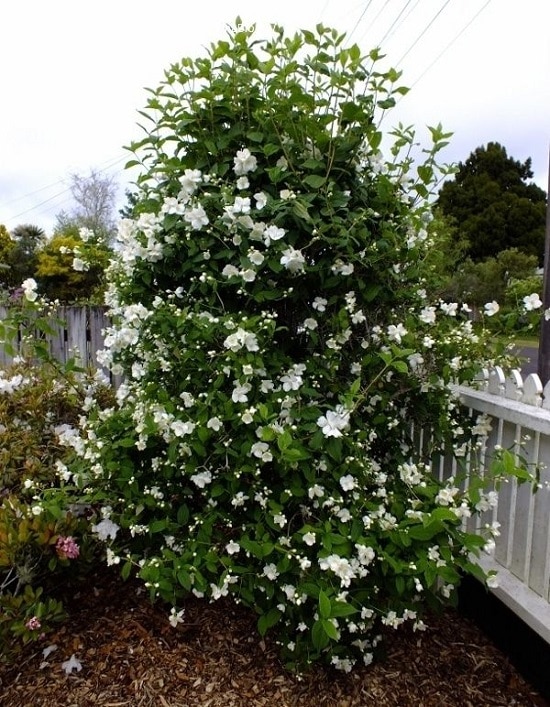If you want robust, healthy blooms in spring and summer, You Should Never Cut Back these Perennials in the Fall!
Timing is everything in successful gardening—this includes pruning! As we enter autumn, we share a selection of perennials you should never cut back in the fall if you want them to grow and bloom abundantly in spring and summer!
Perennials You Should Never Cut Back In Fall
1. Roses

Botanical Name: Rosa spp.
Roses are garden favorites; every gardener wants to include them in their landscape. Although cutting back roses can help the plant and the flowers, best do it late winter or spring—after the plant has gone dormant in the fall.
Roses that only flower once a season should be pruned after flowering, and multiple blooming ones should be cut back in early spring once the buds break. Cutting back roses during the first frost in the fall may confuse the plant into growing instead of entering dormancy!
Pruning at the wrong time will produce new, tender growth that won’t withstand winter. This upsets the entire cycle and balance of things, tapping into the resources it needs to rest and self-preserve and weakening it in its actual growth phase.
2. Forsythia
Botanical Name: Forsythia spp.
Forsythia is a perennial that produces beautiful yellow flowers that mark the arrival of spring in gardens. This plant grows vigorously, which might tempt you to prune in the fall. However, the best time to prune or cut back is mid-spring, immediately after flowering.
Pruning in the fall will deter robust spring blooms! Apart from fall, you can prune this perennial regularly to keep it tidy and thriving.
3. Globe Thistle
Botanical Name: Echinops bannaticus
In addition to growth, there are other reasons to stop pruning in the fall. For example, globe thistle will continue growing if you prune it in the fall, but it can affect the seed heads that it produces atop its stems.
These seed heads are a good food source for birds in harsh winters, so it’s better not to deprive them of these natural treats. The best time to prune thistles is early spring.
4. Russian sage
Botanical Name: Perovskia atriplicifolia
Russian sage has menthol-scented silvery-green leaves and purple-blue flowers that bloom from summer through fall and attract the most beautiful butterflies to your garden! Never cut back this perennial in the fall; instead, prune mid-spring to add interest to your winter landscape!
Cutting back in the fall could result in untimely new growth in mild winter or entirely kill the plant in harsh cold.
5. Coneflower
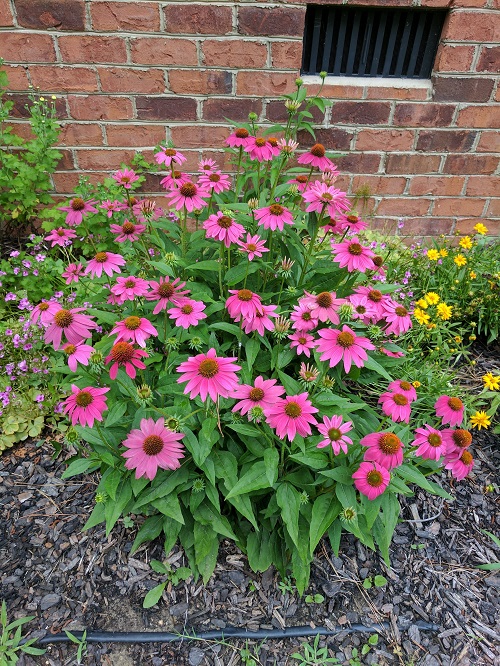
Botanical Name: Echinacea spp.
Coneflowers are erect perennial herbs that produce beautiful purple, pink, white, or yellow flowers in summer. Like globe thistles, their large seedheads are an excellent food source for birds.
There is also an ornamental side to not pruning these plants in fall, as dried coneflowers add winter decor to your flower beds. After all frost has passed, pruning these self-seeders in spring helps keep them in the best of health and in check in the upcoming season.
6. Black-eyed Susan
Botanical Name: Rudbeckia hirta
Another prolific self-seeder, if you want a garden abundant in daisy-like yellow blooms, don’t cut these in the fall. This will also help you keep the pollinators coming to your garden, and birds will keep feeding on their flower heads.
You can place mulch around the base stems of these plants to protect the roots in winter and then prune them in spring.
7. Mock orange
Botanical Name: Philadelphus coronarius
Mock orange plants bloom on old wood, which occurs primarily in fall. So, if you cut back now, you will prevent flowers from blooming! Let these plants flower in spring, and as you enter summer, you can pick up those shears and cut them back.
Emitting a fragrance similar to oranges, this plant looks beautiful in mixed flower beds.
8. Viburnum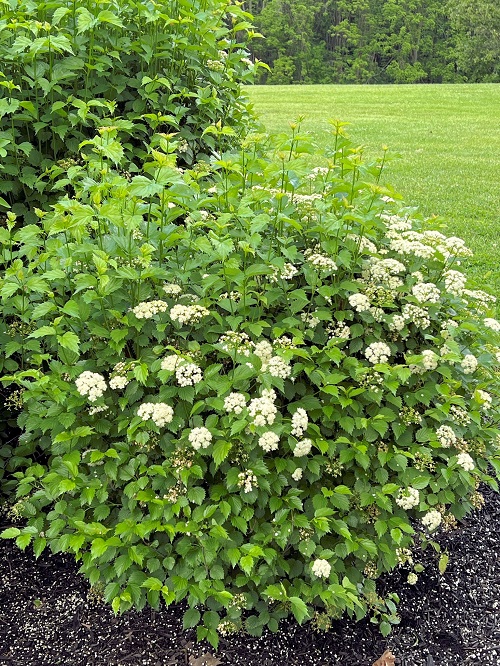
Botanical Name: Viburnum spp.
You should avoid pruning this plant in the fall for multiple reasons. Flower buds grow on the old wood of viburnum, and pruning them in the fall will reduce flowering and fall berries, which are also a favorite bird food.
You can prune these shrubs when the flowering is completed in spring. This will also help you shape the shrub and improve its aesthetics.
9. Lady’s mantle
Botanical Name: Alchemilla mollis
Lady’s mantle looks beautiful in garden beds with yellow flowers and large leaves. This easy-to-care-for plant is a good option for busy gardeners. Avoid pruning in the fall to shelter its crown from harsh winters.
Instead, when you see the plant beginning to leaf out in spring, cut them back. If your region experiences intense summers, grow it in partial shade, as direct sun can scorch the leaves.
10. Ninebark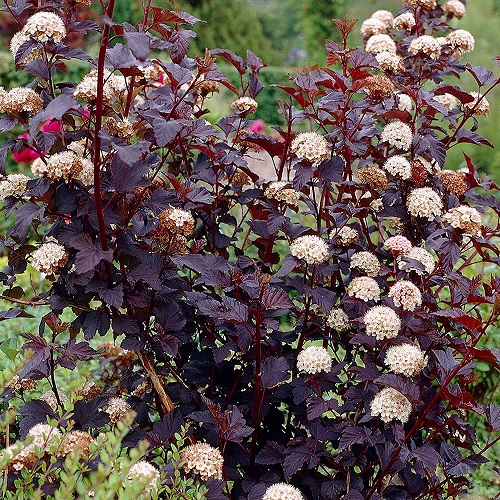
Botanical Name: Physocarpus spp.
Prune ninebark in winter, well into its dormancy, or in early spring, as it begins to leaf out and show signs of revival. Remove the outer branches and dead foliage throughout the summer growing season.
Often used in mass planting or as a hedge, ninebark has unique, exfoliating bark and produces pink and white spring and summer blooms that attract pollinators like bees, butterflies, and moths.
11. Lilacs
Botanical Name: Syringa spp.
Lilacs don’t need regular pruning; they can grow to considerable heights in the wild. However, when you grow them in the garden, you want to keep the size in control, and pruning helps with that.
To keep it in shape and encourage recurring blooms, cut back about a third of its branches to the ground during spring for about three years. With proper care, you’ll enjoy fragrant clusters of purple and white flowers and eye-catching foliage.
12. Rhododendrons
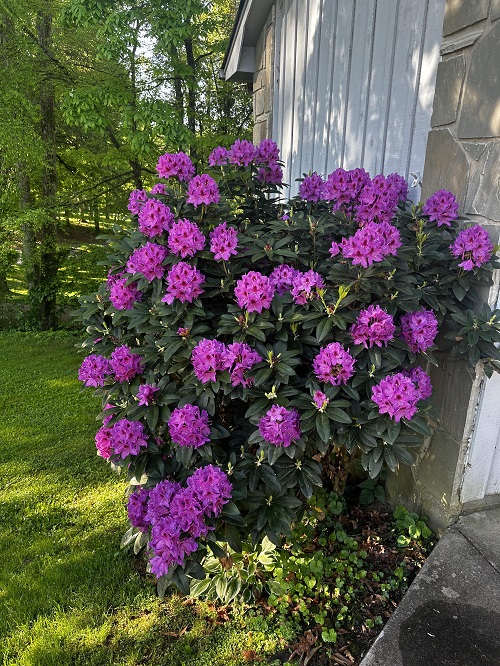
Botanical Name: Rhododendron spp.
The pinkish-purple trumpet-shaped blooms of rhododendrons look stunning, attract pollinators, and are super easy to grow even in poorer soils. While some cultivars should be pruned right after blooming, those with heavy blooms can be pruned before flowering.
Hardwood can be pruned anytime except during freezing temperatures, while softwood should be pruned during the growing season. Avoid cutting back in the fall, as new growth will not be able to withstand harsh winters.
13. Hydrangeas

Botanical Name: Hydrangea spp.
Hydrangea varieties like bigleaf, oakleaf, and climbing types produce buds on old wood, so pruning in the fall could trim away next year’s flowers. So, if you grow any variety in this category, you should prune them in spring or early summer.
This will ensure that your hydrangeas are in full bloom and will create an amazing display in spring.
14. Perennial Sunflower
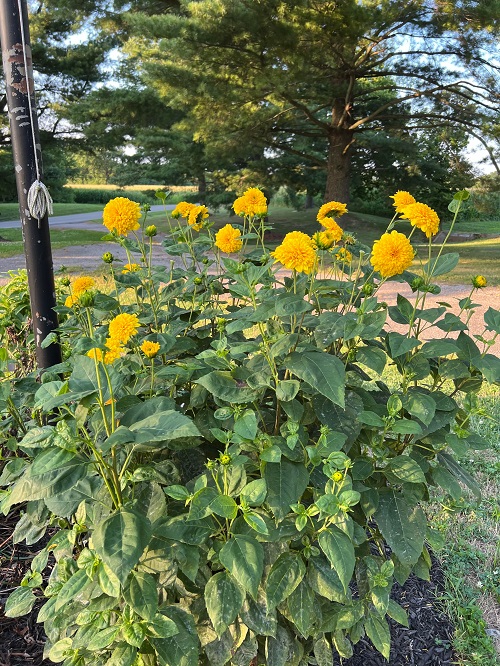
Botanical Name: Helianthus multiflorus ‘Flore-pleno’
These sun-loving plants love to bask in the sun, thriving without pruning or fuss. As they wilt under the frost, you can let the seed heads remain for birds to feed on. Leaving them untouched, without cutting back in the fall, adds visual interest to your landscape when most gardens look dull.
15. Japanese Silver Grass

Botanical Name: Miscanthus spp.
Like many other varieties of ornamental grass, this warm-season grass can be left without cutting back in the fall. Leaving it untouched will protect the roots from winter damage. Many bird species and other pollinators nestle within its blades during winter.






